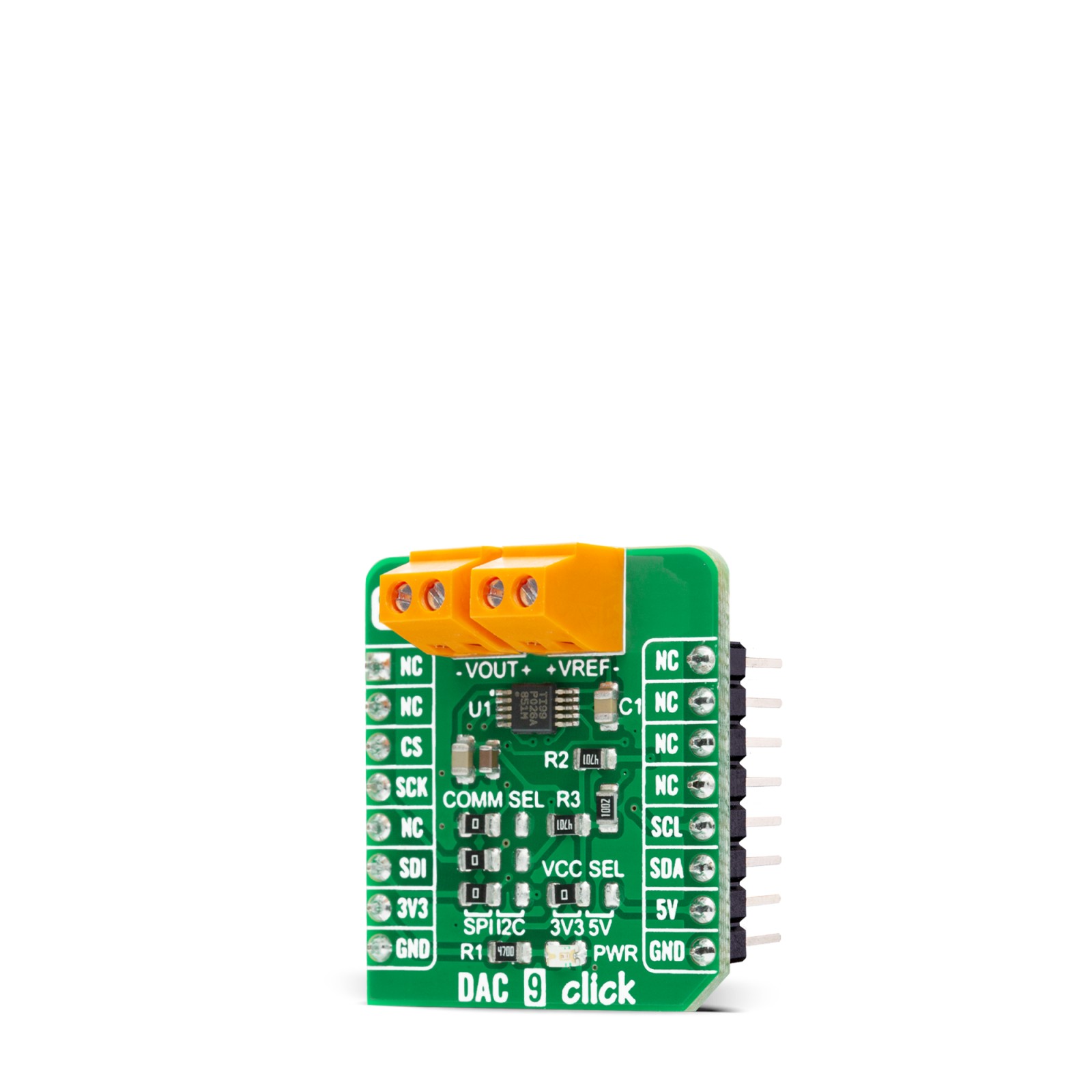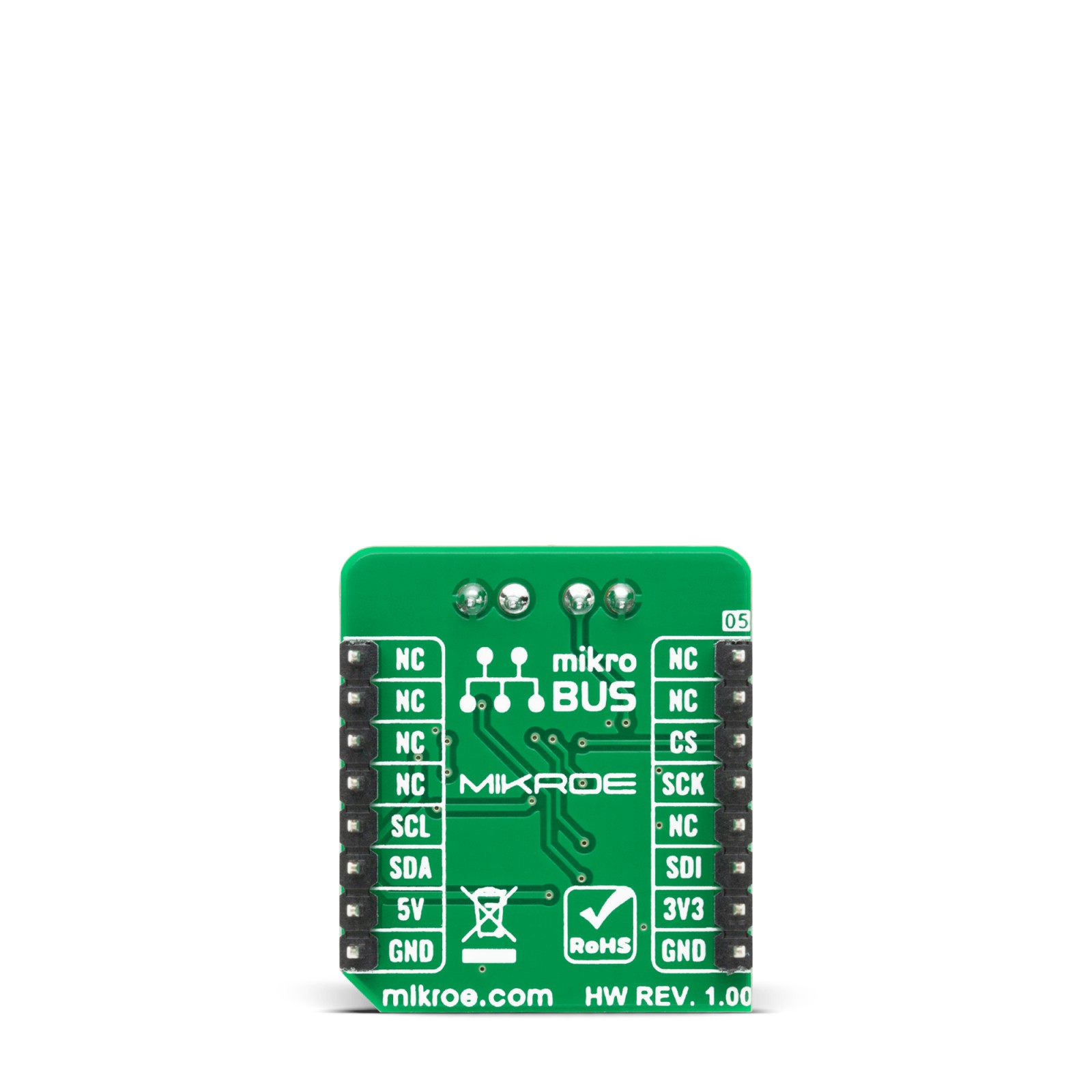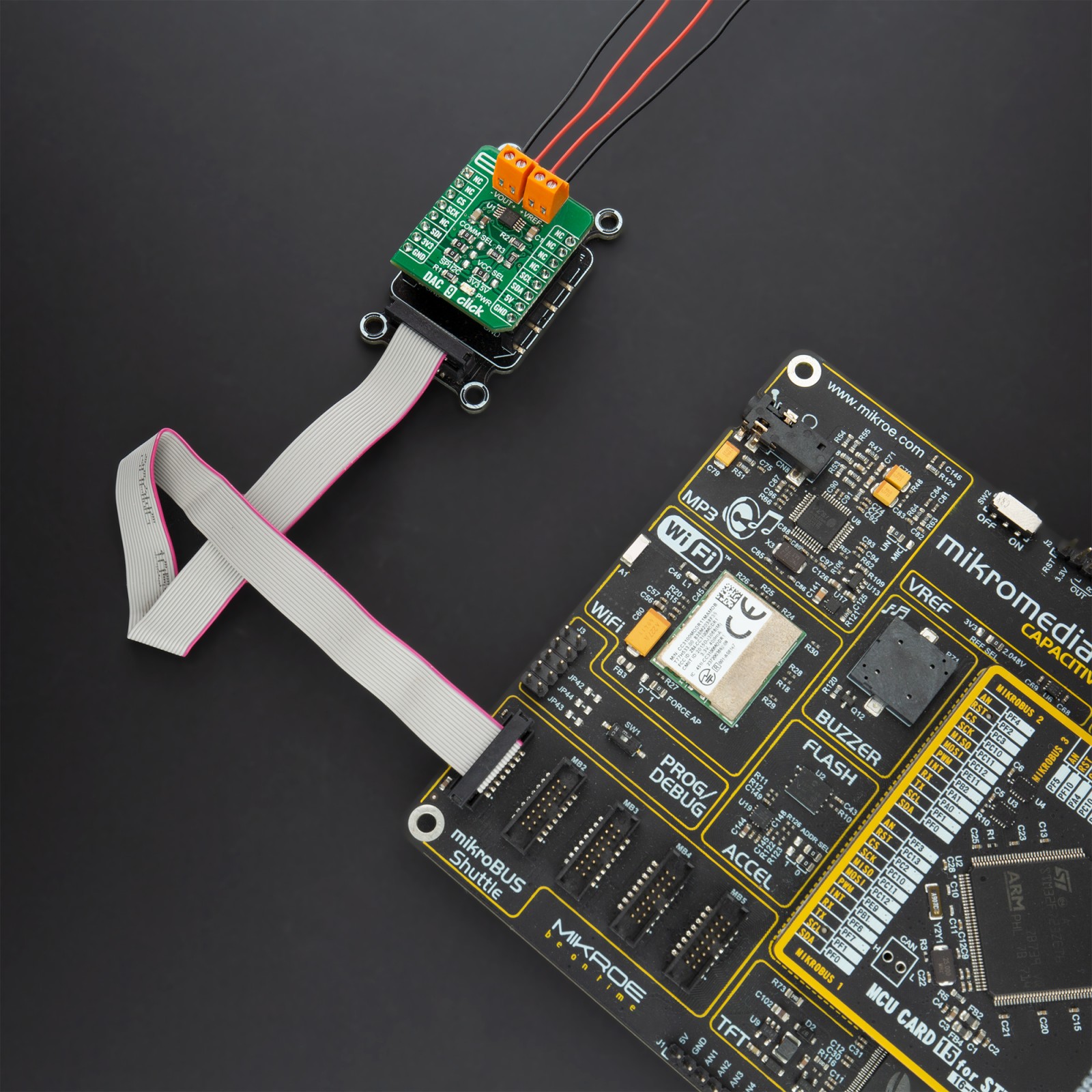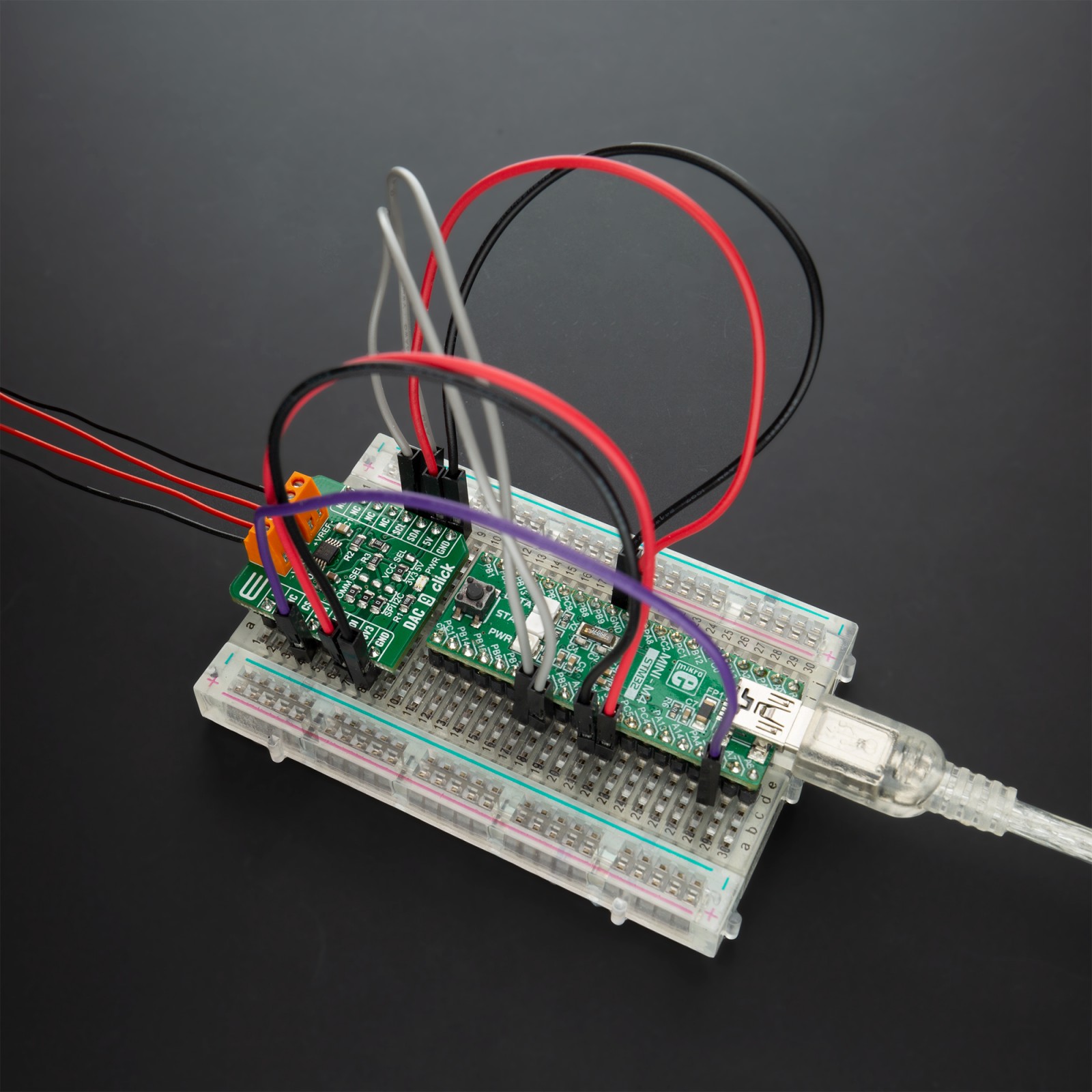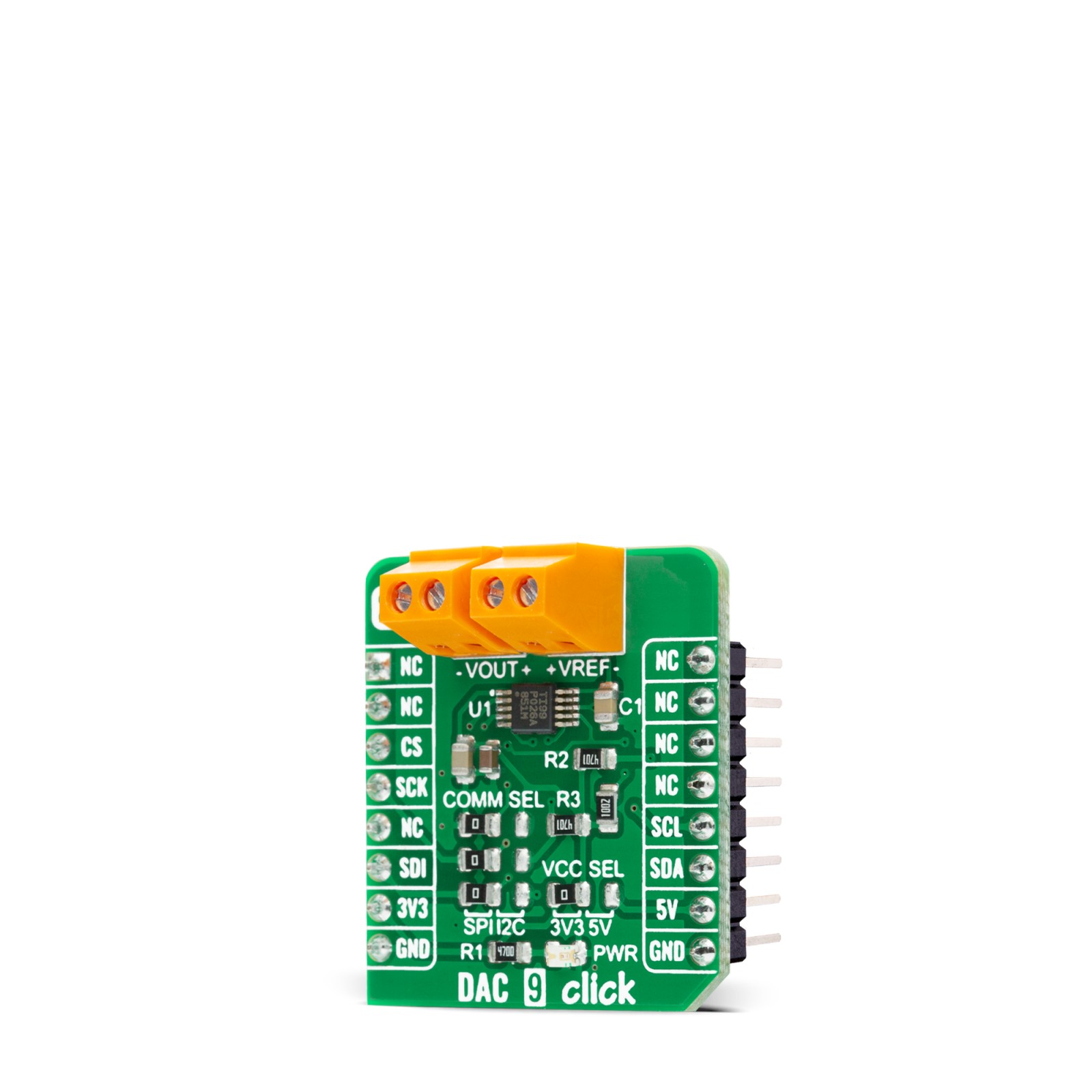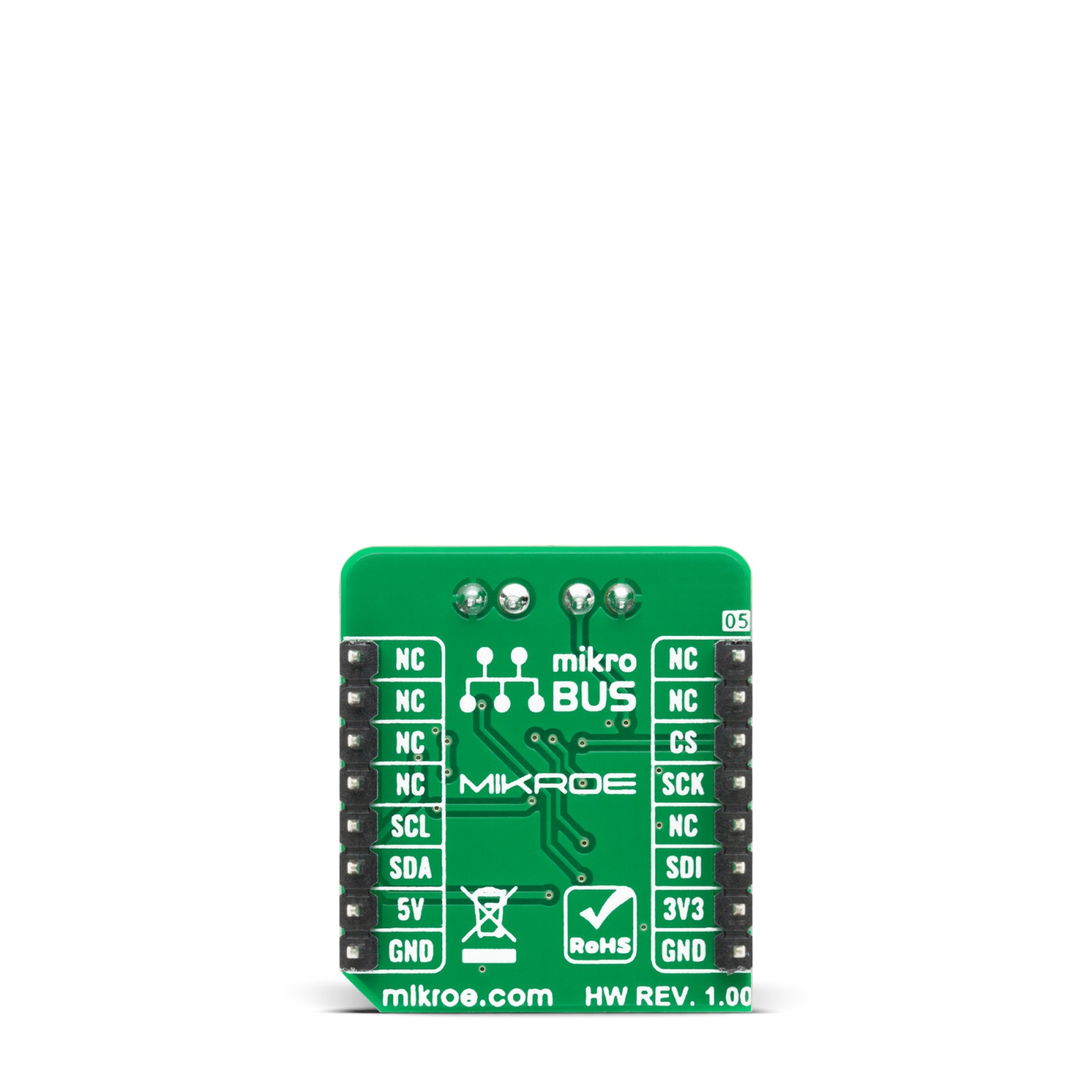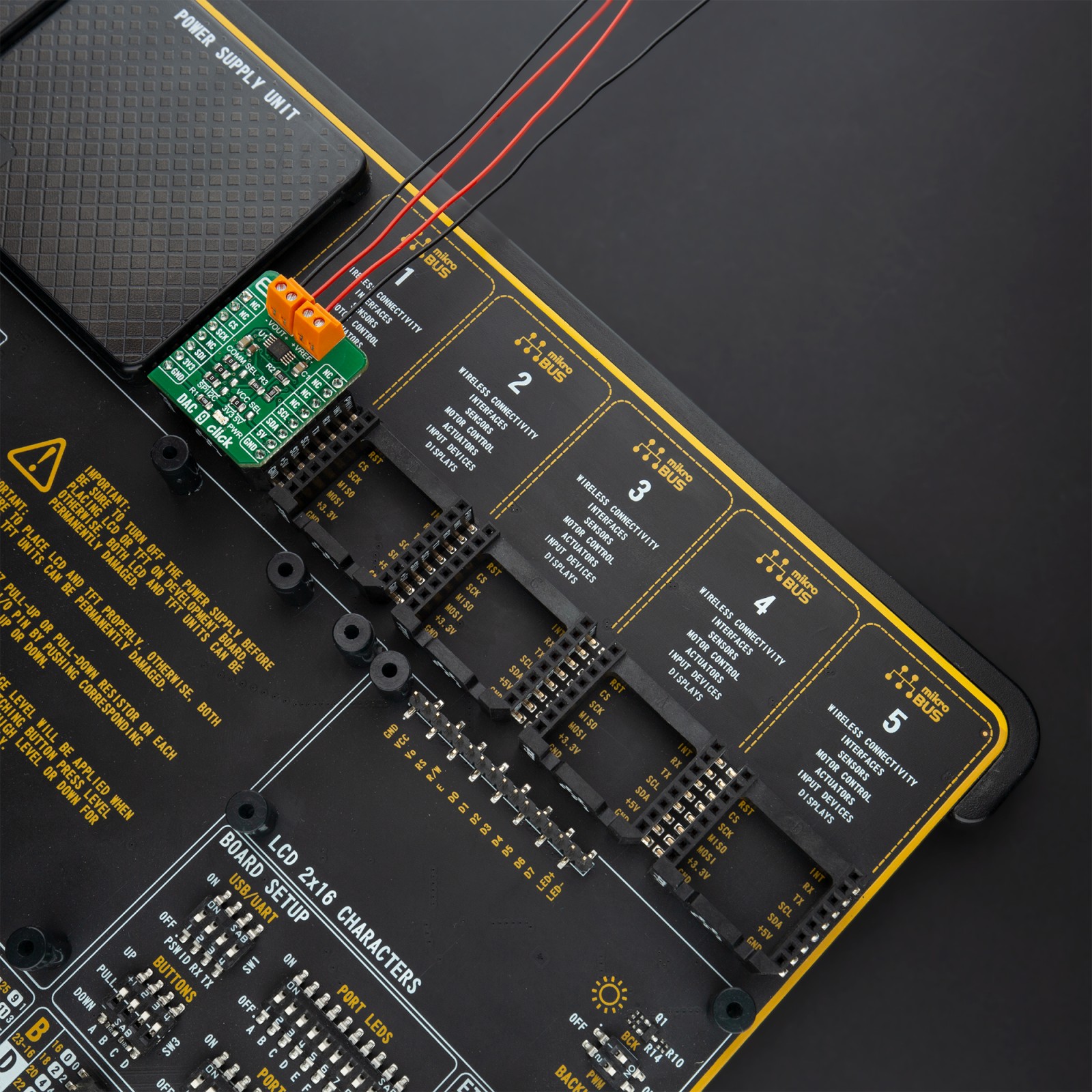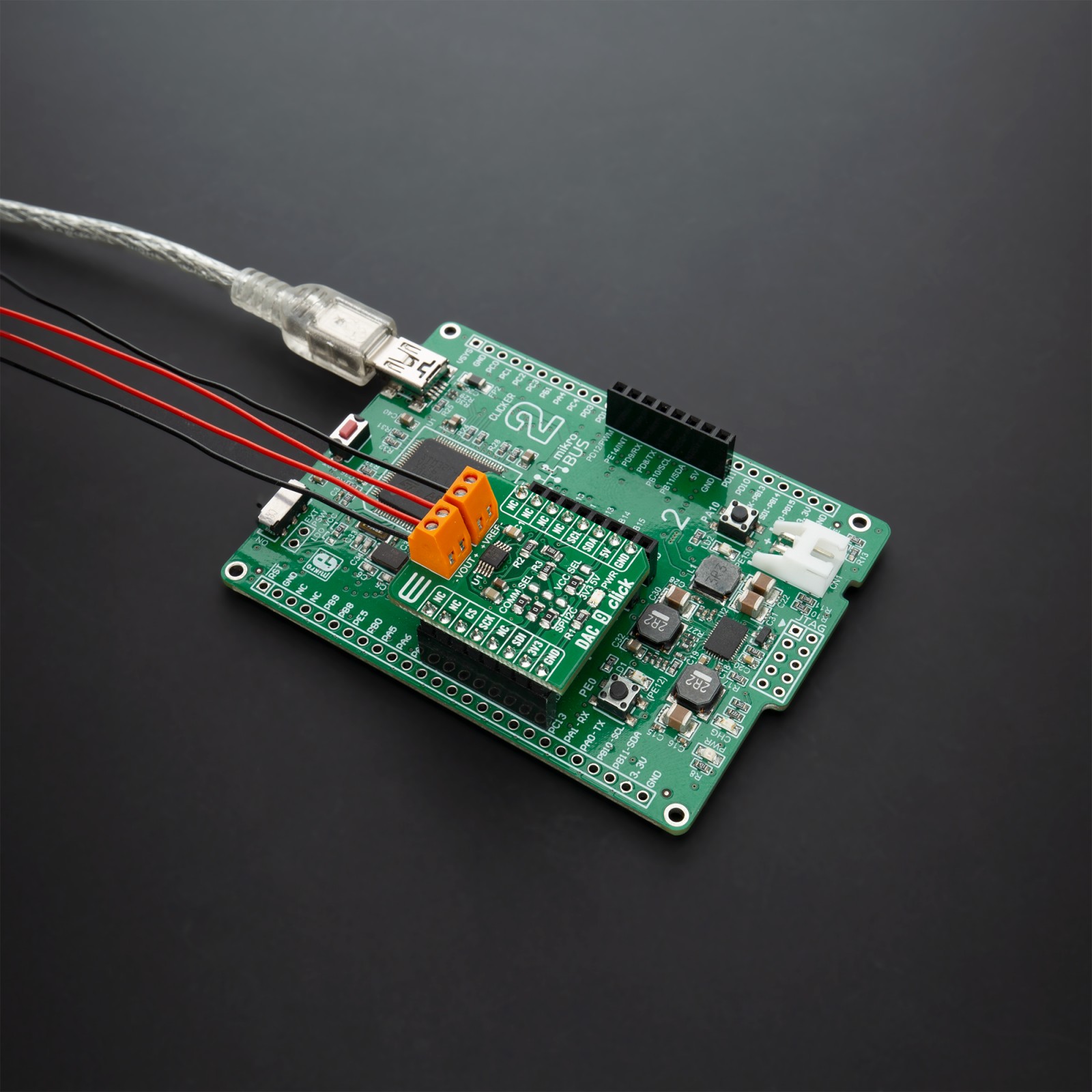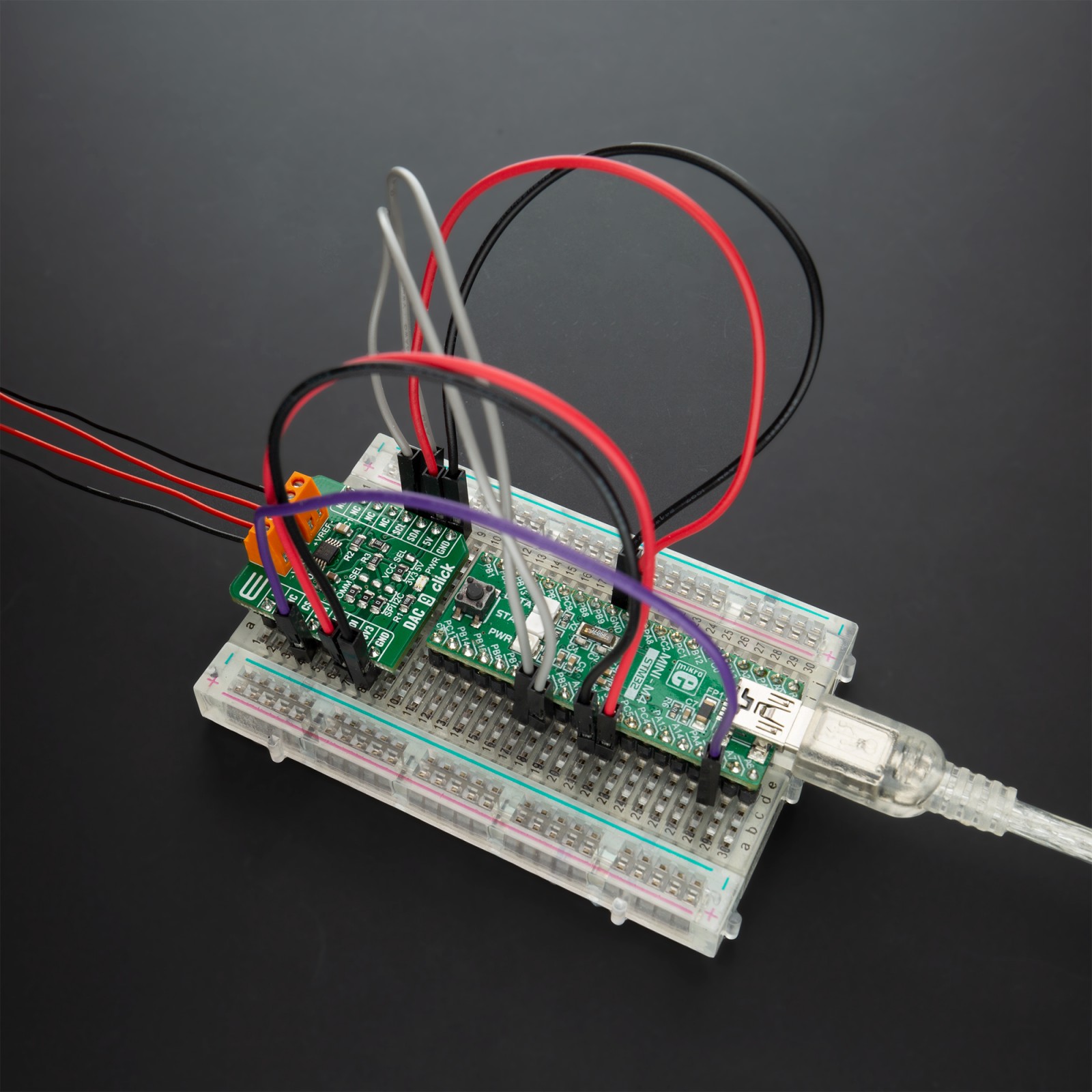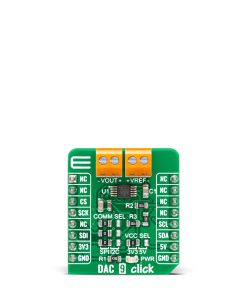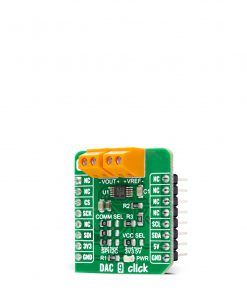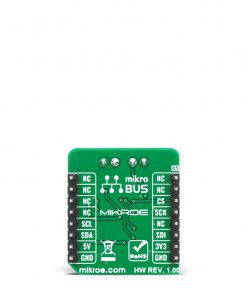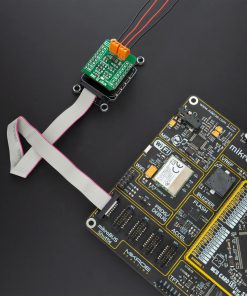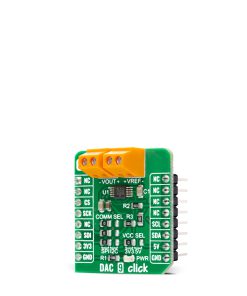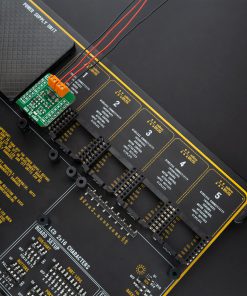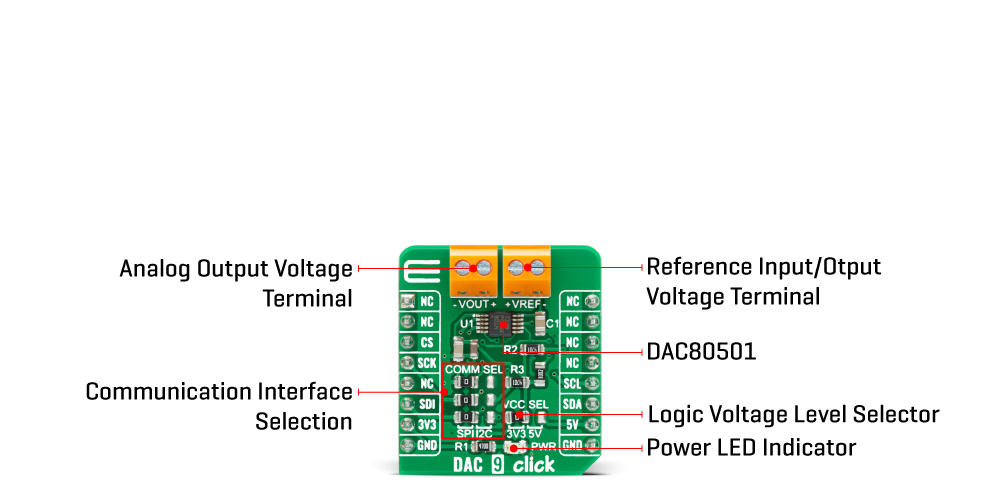DAC 9 Click is a compact add-on board that contains a fully-featured, highly accurate digital-to-analog converter. This board features the DAC80501, a 16-bit voltage-output digital-to-analog converter with precision internal reference from Texas Instruments. It supports both I2C and SPI serial interface and offers a linearity of < 1 LSB. It also includes a 2.5V internal reference, giving full-scale output voltage ranges of 1.25V, 2.5V, or 5V, incorporate a Power-On Reset function, consume a low current of 1mA, and include a Power-Down feature that reduces current consumption to typically 15μA at 5V. This Click board™ is suitable for applications such as offset and gain control, VCO tuning, programmable reference, and more.
DAC 9 Click is supported by a mikroSDK compliant library, which includes functions that simplify software development. This Click board™ comes as a fully tested product, ready to be used on a system equipped with the mikroBUS™ socket.
 MP3 Click
1 × R485.00
MP3 Click
1 × R485.00  GSM-GPS Click
1 × R1,350.00
GSM-GPS Click
1 × R1,350.00 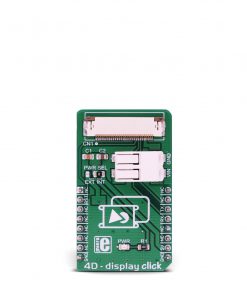 4D-display Click
1 × R205.00
4D-display Click
1 × R205.00 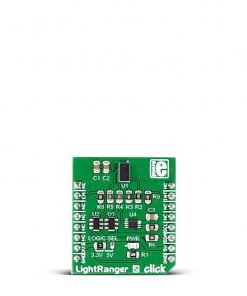 LightRanger 2 Click
1 × R540.00
LightRanger 2 Click
1 × R540.00  BEE Click
1 × R800.00
BEE Click
1 × R800.00 

